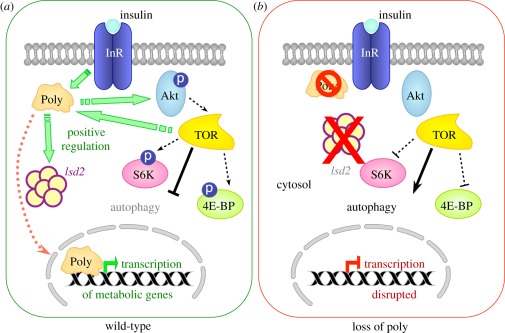Figure 8.
Model for the function of Poly in the InR–TOR signalling pathway. The interaction of Poly with (a) the insulin receptor allows it to fulfil a role as a positive regulator of InR–TOR signalling, which has the overall effect of increasing the phosphorylation and, hence, activity of numerous positive regulators of the InR–TOR pathway, such as Akt, S6K and 4E-BP, as well as inhibiting negative regulators of cell growth such as autophagy. Furthermore, Poly aids to promote anabolic metabolism resulting in an increase of TAG and Lsd-2 levels. (b) The absence of Poly leads to a decrease in the activation of positive regulators of cell growth such as Akt and S6K kinases. The 4E-BP protein becomes hypo-phosphorylated, consistent with an overall downregulation of InR–TOR signalling. Furthermore, autophagy—a negative effector of InR/TOR signalling—becomes constitutively active. Anabolic metabolism is downregulated as indicated by a decrease in TAG and Lsd-2 levels.

